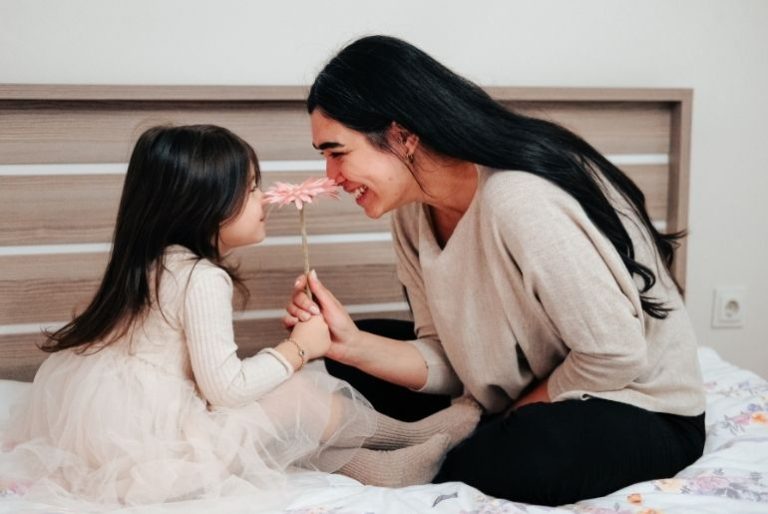If your family is anything like ours, life is never predictable and certainly never stands still. Challenges to our family’s way of life, our values, our routines and our relationships all come and go and are managed as best they can. Sometimes these challenges manifest in undesirable actions, creating another challenge, the challenge of anxious behaviour.
Often in the face of such challenges, we – the adults – while dealing with the problems we’re facing, often are too busy to see the impact, let alone manage it with our children.
All too often we misread our children’s behaviour through our own ‘lens’, and as a result don’t respond in a way that might have more positive outcomes for our children.
Learning to see the difference between anxious behaviour, and just poor behaviour, in your child, will help you to use the right sort of intervention with them.
My own experience of anxious behaviour
We made the decision to withdraw our 8 year old from school and embark on a home-school adventure with her and her nearly 6 year old brother.
We involved our daughter in our decision making and worked hard to ensure she was supported throughout the change in her lifestyle and routine.
We had many family discussions, involving her brothers, and shared with her in depth how her new ‘school’ routine will work out.
As parents, we felt we were doing everything right by our daughter to support her through this transition, and manage the challenges that we all faced as a family together.
What we didn’t factor into our support-work was how her younger brother might interpret the pending change.
As we awaited the much-anticipated exemption certificate, and discussed this as she went off to school each day, her brother became more aware that his big sister was about to become a ‘home-schooler’.
We assumed, because he is already living the lifestyle of this type of student, naturally he would understand what that would look like for his sister. And yet this was a very incorrect assumption on our part!
During these weeks of waiting, his behaviour became more and more silly, loud, disruptive and at times very antagonistic.
His deteriorating behaviour was communicating the challenge he was facing. He was trying to understand the pending changes and what this might mean for him. Because we focussed on how the changes would effect his sister, we’d missed the important discussions around how all of this would effect him.
Behaviour that could be read as being ‘naughty’ or ‘disruptive’, was in fact anxious behaviour.
Knowing our son as we do, his anxiety is demonstrated in loud and almost hyperactive ways. The moment we realised this, of course, we were able to respond to his anxiety in a much more supportive and understanding way.
The challenge of anxious behaviour
Anxiety can be defined as, ‘a noticeable change in a person’s baseline behaviour’.
A person’s baseline behaviour can be defined as behaviour they engage in when all of their basic needs are met and they are content.
Changes to this baseline can range in anything from a person becoming withdrawn, quiet, disconnected, through to aggressive, loud, non-compliant and so on.
What is anxious behaviour for one person can look vastly different for another. Underneath all of the behaviour we can see, is a physiological change as a response to the worry the person may have.
In younger children, they will not necessarily even be aware as to what is bothering them. But they will react physiologically in the same way.
In our son, for instance, this resulted in his body becoming agitated. As a result, his behaviour also became agitated.
Anxious behaviour, including the most challenging in-your-face types, can be best addressed by a supportive response.
Acknowledging and locating the source of the worry for the child can help to address their behaviour. Checking that what they are worrying about is factual and real also helps to keep worries in perspective.
For our son, the moment we worked out he was worried about what the change in our family might mean for him, we were able to assist him to understand and manage his worries more appropriately.
We could coach his feelings and teach him some more appropriate behaviours he could use when he was feeling worried. He still met with consequences if he overstepped our expectations – but these were administered with an atmosphere of support, not punishment.
Some challenges are mountains, others molehills. What is predictable no matter the size is that challenges are inevitable. And what’s really important is that the challenges causing the anxiety are dealt with. This prevents the anxious behaviour developing into a self-esteem spiral.
As parents it is important for us to not only monitor our own personal responses to these challenges, but to also see them as an opportunity to understand our children’s responses and to teach and model ways to cope in the face of them.
Now that you know more about the challenges of anxious behaviour, find out about Using Empathy to Deal With Your Child’s Emotions. Or, for more expert advice check out our Development and Behaviour sections.







I can relate to your article ….so much! Did the same thing in the early 90’s we had three boys between two girls and we had the support of two home schooling groups …but our children were so different and what worked for the elder did not work for the son who was the younger, (always asking to join the bigger boys at the local schools) if it had been the other way around , things may have been different, he ended up going to private Christians school in the last year s of primary and at 13 year the… Read more »